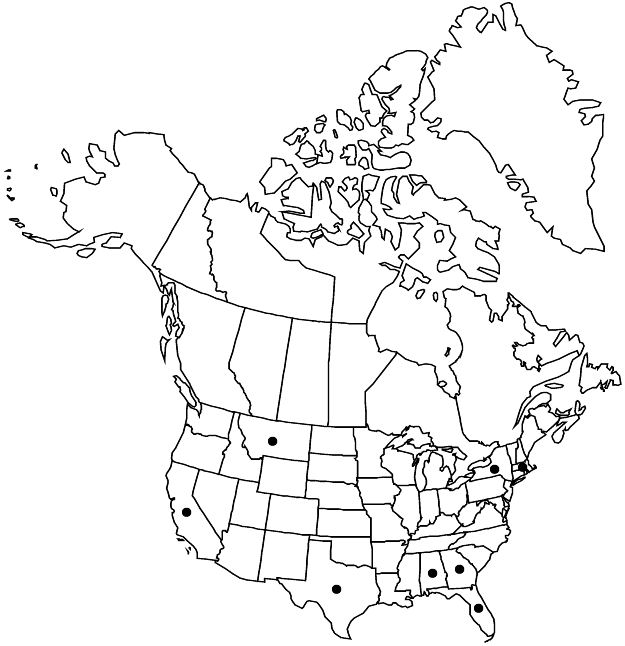Cucumis anguria
Sp. Pl. 2: 1011. 1753.
Plants dioecious, roots thin, without thick, woody rootstock. Tendrils setose. Leaves: petiole hispid to setose; blade broadly to narrowly ovate, deeply palmately 3–5-lobed to weakly 3-lobed or nearly unlobed, [sometimes pedately lobed], 3–12(–15) × 2.5–12(–15) cm, length 0.9–1(–2) times width, base cordate, lobes broadly elliptic to obovate, spatulate, or ovate, margins serrate or entire. Inflorescences: pedicels of pistillate flowers distally dilated; staminate flowers 3–10 in racemes, pedunculate or sessile; pistillate flowers: calyx lobes 2–4 mm, petals 6–8 mm, corolla tube 0–1 mm, sparsely puberulent inside. Pepos light yellowish green to light yellow, sometimes with light green stripes, usually ellipsoid, rarely obovoid, 2–7 × 1.5–4 cm, surfaces ± aculeate at maturity, flesh greenish white to yellowish green. 2n = 24.
Distribution

Africa, Atlantic Islands (Cape Verde Islands), introduced also in Mexico, West Indies, Central America, South America, Pacific Islands (Marquesas Islands), Australia.
Discussion
Varieties 2 (2 in the flora).
Selected References
None.
Key
| 1 | Pepos obscurely aculeate, aculei 1–2 mm; leaf blades deeply palmately 3–5-lobed. | Cucumis anguria var. anguria |
| 1 | Pepos prominently aculeate, aculei 4–10(–15) mm; leaf blades deeply palmately 3–5-lobed to weakly 3-lobed or nearly unlobed. | Cucumis anguria var. longaculeatus |